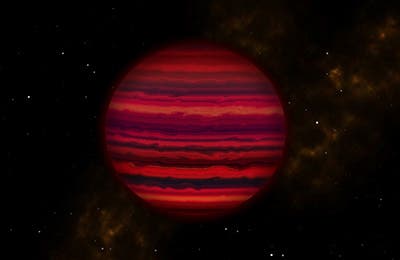Researchers working with the Gemini North telescope in Hawaii have made a stunning discovery: they found evidence of water clouds around a brown dwarf.

Since its discovery, the brown dwarf known as WISE 0855 has fascinated astronomers. It lies just 7.2 light-years from Earth and it’s the coldest confirmed object outside of our solar system at temperatures ranging between −48 to −13 °C (that’s −55 to 8 °F). The team working on the star have now obtained the star’s infrared spectrum — providing the first details of the object’s composition and chemistry. Among the findings is water, in the form of clouds.
“We would expect an object that cold to have water clouds, and this is the best evidence that it does,” said Andrew Skemer, assistant professor of astronomy and astrophysics at UC Santa Cruz.
“It’s five times fainter than any other object detected with ground-based spectroscopy at this wavelength,” Skemer said. “Now that we have a spectrum, we can really start thinking about what’s going on in this object. Our spectrum shows that WISE 0855 is dominated by water vapor and clouds, with an overall appearance that is strikingly similar to Jupiter.”
Cold stars
Brown dwarfs are failed stars, which never picked up enough steam and mass to spark the nuclear fusion necessary to become “real” stars. In a way, they’re more similar to gas giants than stars, but they formed from the collapse of nebular gases, not from the accretion disc.
But having about five times the mass of Jupiter, WISE 0855 resembles that gas giant planet in many respects. In fact, astronomers believe that by studying WISE 0855 we could learn more about Jupiter.
“WISE 0855 is our first opportunity to study an extrasolar planetary-mass object that is nearly as cold as our own gas giants,” Skemer said.
Another interesting similarity is that they seem to share similar spectrum features. Namely, their spectra have similar water-absorption features, which likely indicates that they both have water vapours in their respective atmospheres. However, Jupiter also has a significant amount of phosphine (a compound of phosphorous and hydrogen) in its atmosphere, while WISE 0855 does not, which would indicate that Jupiter’s atmosphere is much more turbulent, and WISE 0855 is a calmer place.
WISE 0855 and brown dwarfs in general still have many secrets which await uncovering, but the mere fact that we know about a star with water vapours in its atmosphere is mind blowing.
The research was published in Astrophysical Journal Letters and is currently available online.






